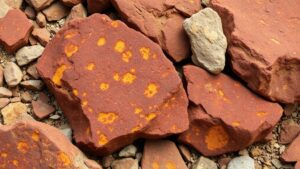The History of Underground Mining in the Alps: Early Methods and Tools
The History of Underground Mining in the Alps: Early Methods and Tools
The history of underground mining in the Alps is a rich tapestry woven through the fabric of human ingenuity and necessity. The Alps, known for their rugged terrain and abundant mineral resources, have been the site of significant mining activity since antiquity. This article delves into the early methods and tools employed in underground mining within this mountainous region, emphasizing the evolution of techniques and their socio-economic impacts.
Historical Context and Early Beginnings
Mining in the Alps can be traced back to the Roman Empire, where extensive mining operations targeted valuable minerals like silver and copper. earliest evidence of such activities dates back to around 200 BC in what is now modern-day Austria and Switzerland. Archaeological findings indicate that the Romans utilized rudimentary tools and methods that laid the groundwork for future mining techniques.
Early Mining Techniques
In the fledgling stages of mining, laborers employed basic techniques that were primarily manual. These methods included:
- Artisanal Mining: Small scale and family-run, artisanal mining involved simple hand tools such as picks made of wood and stone. This method was labor-intensive and was often performed in shallow pits or tunnels.
- Fire Setting: This technique involved heating the rock using fire and then dousing it with water. The rapid temperature change caused the rock to crack, making it easier to extract metals.
- Hand Drilling: Miners used handheld tools like the chisel and hammer to create small holes in rock faces, which were then filled with explosive substances like gunpowder.
Tools of the Trade
The tools used for underground mining evolved as techniques advanced. The following tools were vital during the early mining periods:
- Picks and Hammers: Essential for breaking rocks, these tools were commonly made from iron or hardened wood.
- Shovels and Trowels: Used to remove loosened debris and transport materials.
- Ropes and Pulleys: These were important for hauling mined materials to the surface, especially in steep mountain locations.
Mining Locations and Their Economic Impact
Key mining locations in the Alps included regions such as Tyrol in Austria and Valais in Switzerland. Tyrol region, recognized for its silver mines, became a focal point during the late Middle Ages. The silver extracted not only fueled local economies but also provided essential resources for the burgeoning European markets.
One notable example is the Schwaz silver mine in Tyrol, which peaked during the 15th century. This mine contributed significantly to the wealth of the Habsburg Empire and played a critical role in the European economy, showcasing how local mining influenced broader economic trends.
Challenges Faced by Early Miners
Despite the technological advancements, early miners faced numerous challenges, including:
- Safety Hazards: The risks of cave-ins and flooding were prevalent, given the rudimentary nature of their techniques.
- Health Issues: Poor ventilation in mines led to respiratory problems for miners, exacerbated by the accumulation of dust and harmful gases.
Conclusion
The history of underground mining in the Alps illustrates the evolution of human skill and technology, from primitive tools to more sophisticated methods. socio-economic impact of these early mining efforts not only shaped local communities but also influenced broader economic structures across Europe. As such, the legacy of the Alps mining heritage is a reminder of the fundamental role that resource extraction has played in human history.
Understanding this historical framework allows for a deeper appreciation of modern mining practices and their implications. For those interested in the mining industry today, reflecting on the challenges and innovations of the past can provide valuable insights into contemporary practices and future developments.


